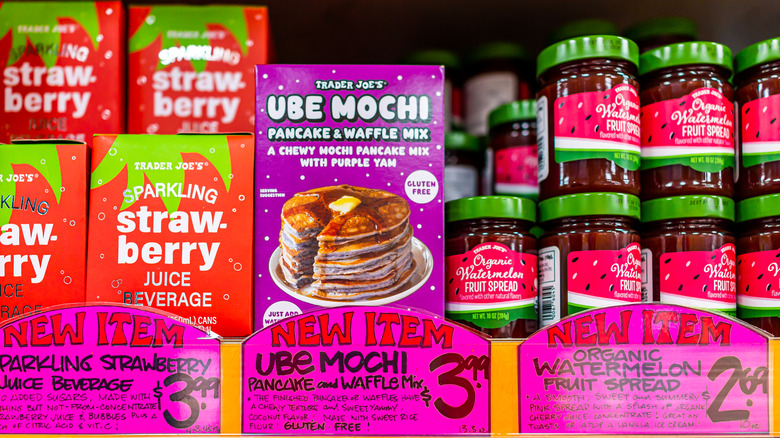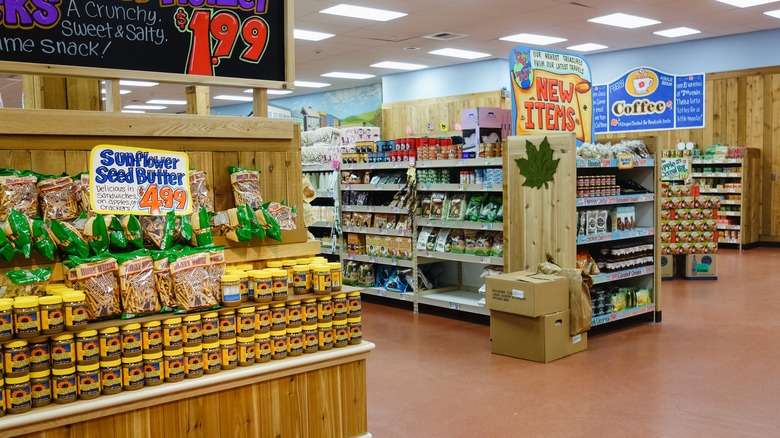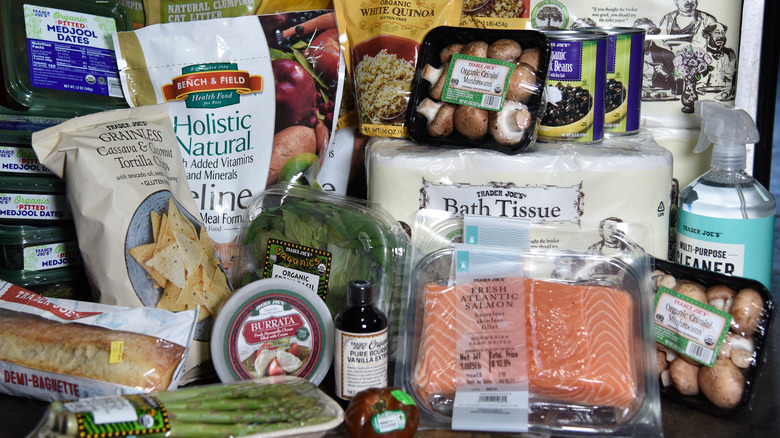Trader Joe's Approves New Items Dinner Party-Style
One of the best parts about shopping at Trader Joe's is discovering exciting new products that often quickly become fan favorites among the store's community of loyal customers. Whether it's a fun new dip flavor, a variation on a fan-favorite cookie, or a never-before-seen canned beverage, there's always the possibility of finding something new and interesting.
However, Trader Joe's is notoriously selective about the items it carries, which might leave you wondering how these products even make it to the shelves in the first place. Is there some kind of lengthy approval process? Thanks to insider information from the August 28 mini-episode of the Inside Trader Joe's podcast, we now know exactly how it all goes down.
According to Trader Joe's, every single item the store considers stocking undergoes "a rigorous tasting process." It all starts with something called a tasting panel, which is exactly what it sounds like — and so much more. Think of it as a crucial dinner party that determines which products make it to the shelves.
The Trader Joe's tasting panel
Before any item can make it to a Trader Joe's shelf, it first has to be conceptualized. Whether it's a new flavor of cereal or vegan bolognese ravioli, the Trader Joe's tasting panel is the group responsible for bringing these ideas to life. The panel must then vote with a large majority (70%) to offer the new product to customers — after which the tasting, testing, and dinner party-style conversations begin.
The first step is to taste the product — or, if it's not edible, to use it. However, as the Inside Trader Joe's podcast hosts emphasize, this is tasting as opposed to eating: The panel must set aside personal biases and preconceived notions, considering intentionally how the item tastes on behalf of Trader Joe's customers. The group isn't merely tasting the item to see if it's good; they are also evaluating whether it delivers on what it promises, meets expectations, and is the best representation of the concept behind it.
Does the vanilla flavor taste vanilla enough? Does the frozen flatbread fall flat? Does the crispy chicken live up to its name? If the product passes this initial taste test, the dinner party-style conversation continues, and the next question becomes one of value.
It's all about value
This is where Trader Joe's tends to differ from other popular retail grocery stores. The tasting panel isn't necessarily looking for products that will maximize profits; instead, they focus on items they can sell at a good price for the quality, offering real value to their customers.
To determine this, the panel considers factors such as the total costs to produce the new item, the prices of similar items on the market, and how the new product compares to others within the Trader Joe's ecosystem. This approach aligns with Trader Joe's business model: The company carries over 80% private label items, which allows it to cut costs, offer customers a smaller yet more curated selection, and better monitor quality and value.
So, when the Trader Joe's tasting panel sits down to try a new product and discuss it, these are the topics that inform their decision about whether to stock the item. As podcast host Matt Sloan put it, "It's not just about something on the shelf, it's something worth its spot on the shelf."



